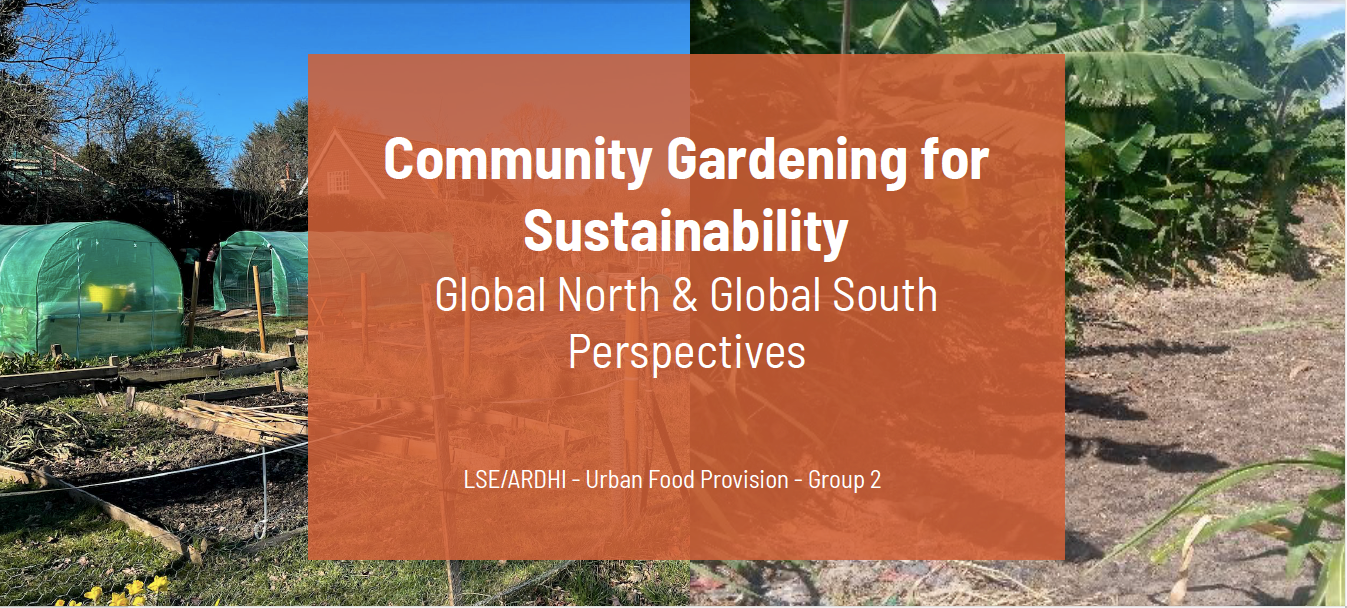This blog post is the result of collaborative work between: Aimee Baker, Claire Lidsky, Cory Russell, Magreth Mwikola, Joseph Oforo, Nassoro Rashadi and Jacquiline Solomon
With growing urbanisation worldwide, ensuring urban sustainability has become critical. As questions of food security have been a rising concern in this context, urban farming practices have witnessed renewed interest, although leading to very different responses in the Global North and South. Yet, irrespective of the chosen approach, it has proven to create clear benefits for cities and their residents, such as community empowerment, economic development, new business and job creation, improved environmental awareness and better food provision. However, two fundamental questions still need to be answered:
- Does urban farming have the potential to reduce cities’ dependence on food grown at great distance from the centre?
- Will it be able to produce enough to address significantly food insecurities?
This blog will delve deeper into the comparisons that need to be made between perceptions of urban agriculture in the global North and the global South, and use these observations to address these core concerns.
Community gardening, fostering new spaces for the community in the Global North?
In the Global North, small-scale community gardens have become a preferred method for people willing to engage more closely with urban food sustainability. As a form of urban agriculture, they have shown great potential in improving the social component of urban life and challenging the ‘mainstream place-making of cities’ (Certomà & Tornaghi, 2015).
In comparison to the Global South, urban agriculture has taken a more nuanced definition as it includes more than just the benefits of food production. As we were able to explore in London, community gardening puts emphasis on the non-productive aspects of urban agriculture including health, recreation, and wellbeing. For instance, in the Loveworks Community Gardens, in Surrey, allotments have become a space of relaxation for local residents and also encourage social interaction. Volunteers collaborate in caring for the allotments, strengthening their sense of community. The output is later donated to local food banks and cafés rather than being used directly to satisfy household needs. As a result, these community gardens have been fulfilling a dual purpose: food production, but also recreation.
Similar intentions led to the creation of the Haggerston Orchard and Community Garden, with the aim of establishing a ‘healthy food hub’ on an underused area of Haggerston Park in Hackney, London. Initiated by a few residents with the support of Hackney City Farm and the Borough of Hackney, the community garden has since grown into a valuable place for the community to discover urban farming and ‘learn new skills to live a healthier, happier life with a lower environmental impact’.
A sufficient answer to food insecurities in the Global South?
In the Global South, urban farming has been envisioned as a solution to alleviate the “persistent poverty, food shortages, rising food prices and hunger” faced by residents of emerging global cities (Burger et al., 2009, p.1 in Tomkins, 2014). In Tanzania, specifically in Dar es Salaam, the focus was instead placed on producing food in and near cities on a larger scale than at home or in community gardens.
In urban areas, a wide range of urban farming is carried out to directly satisfy household needs. Commercial production is derived partly from surpluses, and partly for cash needs generated by the pattern for consumption. Three categories of capital inputs can be identified in urban farming in Dar es Salaam: cultivation inputs, equipment tools, and money drawing from family resources and other formal or informal institutions.
In Tanzania, urban farming is characterized by the unsafe practices of high risk chemical pollution and contamination of pathogens, which puts the farmers, gardeners, and crops users at risk to very high rates of infections. Most of the vegetables cultivated are growing near polluted surface water from rivers within the city, unfortunately, river waters are polluted by informal settlements located near this rivers system which lack adequate sanitation and therefore are prone to microbial contamination. For the case of Kizinga Valley gardening in Dar es Salaam, vegetables are cultivated along the polluted surface water from the Kizinga river, this water is then used for the irrigation of these vegetables. Therefore, the fresh vegetables grown along this area have potential of being contaminated with human pathogens due to the use of untreated wastewater for irrigation.
Food for thought?
As we have discussed, community gardening plays a highly diverse, but always essential role in the Global North and South, might it be for residents’ wellbeing, local sustainability or income generation. However, our overarching questions need answers. In our London examples, community gardening is still far from providing enough produce to address food insecurities significantly or decrease reliance on food grown at distance to the city. Rather, it appears as a complementary productive activity, targeting first and foremost community-building and provision of green recreational spaces for local residents. These examples provide a stark contrast to that of the large-scale urban farming in Dar es Salaam which has a stronger potential to contribute to improving urban sustainability and reducing local dependency on food produced out of urban boundaries.
Looking ahead, for London, a new mindset is developing as food banks are becoming increasingly reliant on community gardens to ensure food security since the COVID-19 pandemic. In the context of Dar es Salaam, national and local authorities will have to provide renewed support to legal and policy framing of urban farming and community gardening for them to play a greater role in enhancing sustainability worldwide. Above all, significant improvements regarding land tenures in Dar es Salaam and helping community gardens to face market pressures in London are deeply needed.
Bibliography:
- Barron, J. (2017) Community gardening: cultivating subjectivities, space, and justice, Local Environment, 22:9, 1142-1158
- Certomà, C. & Tornaghi, C. (2015) Political gardening. Transforming cities and political agency, Local Environment, 20:10, 1123-1131
- Mclees, L. (2011) Access to land for urban farming in Dar es Salaam, Tanzania: Histories, benefits and insecure tenure, The Journal of Modern African Studies
- The London Food Strategy – Healthy and sustainable food for London (2018)
- Tomkins, M. (2014) Making space for food: Everyday community food gardening and its contribution to urban agriculture, Thesis – University of Brighton, April 2014
- UNEP (2014) Building Urban Resilience: Assessing Urban and Peri-urban Agriculture in Dar es Salaam, Tanzania. November 2014
Many thanks to Professor Aldo Lupala, Ardhi University, Dr Nancy Holman (LSE), the Project Assistants (Robinson Kisyombe and Dr Meredith Whitten), and to all the URP students and GY446 students who shared their knowledges and skills. Special thanks to the LSE’s EDEN Centre for funding the Project.





